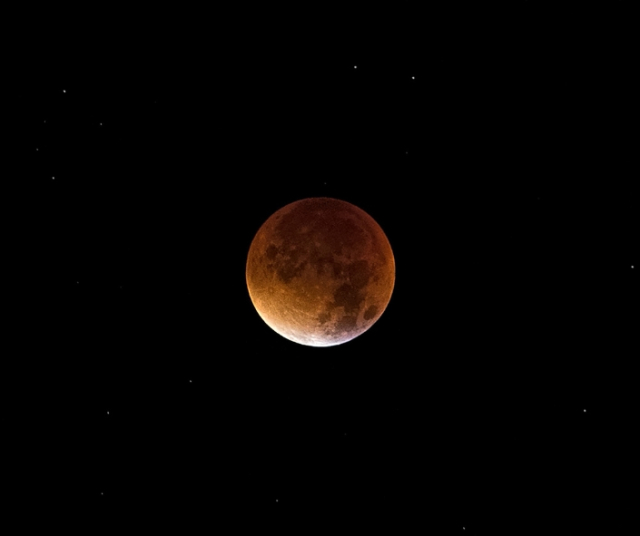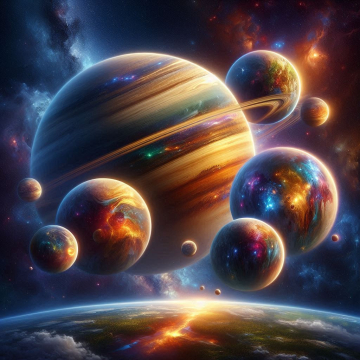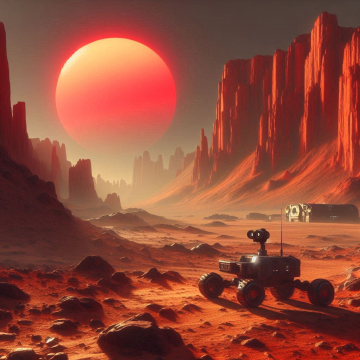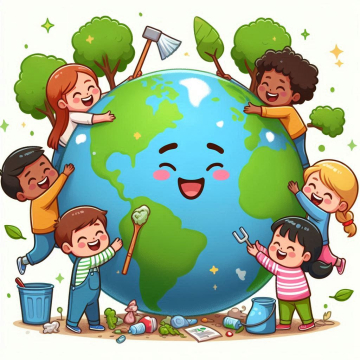Lunar geology is an exciting field of study that has captured the imagination of scientists and space enthusiasts for decades. Our closest cosmic neighbor, the Moon, has been the subject of research and exploration since time immemorial. As we advance in the era of space exploration, our understanding of lunar geology is constantly expanding.
The Formation of the Moon
The Moon is a silent witness to the events that shaped our solar system. The most accepted theory about its formation is the "great impact theory." According to this theory, about 4.5 billion years ago, Earth was hit by an object the size of Mars. The impact was so colossal that it ejected material from the Earth that eventually coalesced to form the Moon.
This violent collision left an indelible mark on lunar geology. The lunar surface is covered in craters, most of which formed during the first billion years after the impact. These craters offer a window into the tumultuous events of the solar system's early days.
The Lunar Surface
Lunar geology is notable for its distinctive and, in some ways, inhospitable landscape. The Moon's surface is mostly rocky, with a layer of dust and regolith, which is a mixture of lunar dust and small fragmented rocks. The Moon's mountainous region is composed mostly of basaltic rocks, while the lunar highlands are made up of anorthosites, an igneous rock rich in feldspar.
Moon rocks have unique characteristics. For example, the lack of atmosphere has allowed lunar rocks to remain relatively unchanged over time, unlike Earth rocks which are subject to erosion and weathering. Additionally, the Moon lacks liquid water, meaning there are no ongoing weathering processes like we have on Earth.
Lunar Craters: Windows to the Past
Lunar craters are one of the most prominent geological features on the lunar surface. These craters provide valuable information about the history of impacts on the Moon and, by extension, the history of impacts throughout the solar system.
The craters range in size from small depressions to immense impact craters that can be seen with the naked eye from Earth. One of the largest and best-known craters is the Copernicus crater, which has a diameter of approximately 93 kilometers. This crater is a stunning example of the energy released during a cosmic impact.
Craters not only tell us stories about past impacts, but are also a valuable source of information about lunar stratigraphy. Sediment accumulated at the bottom of craters can provide clues to geological history and volcanic events on the Moon.
Lunar Volcanoes: A Look at Past Activity
The Moon has also been the scene of volcanic activity in the past. Although current volcanic activity is nonexistent, traces of past eruptions are evident in the form of lava seas, known as "lunar seas." These lunar seas are extensive plains formed by the accumulation of basaltic lava.
One of the most famous lunar seas is the Sea of Serenity, known as "Mare Serenitatis." Although these plains appear serene today, in the past, they were the scene of massive volcanic eruptions that shaped the lunar surface.
Volcanic activity on the Moon was largely due to the pressure of magma accumulating inside. The lack of a thick crust and atmosphere allowed lava to flow freely and create these basaltic plains.
Lunar Regolith: A World of Dust
Lunar regolith is a layer of loose material that covers the surface of the Moon. It is made up of rock fragments, lunar dust and small rocks. Due to a lack of atmosphere and erosion, the lunar regolith has remained largely unchanged for billions of years.
This layer of regolith is of great interest to scientists studying lunar geology, as it contains valuable information about the history of the Moon and, by extension, the solar system. Regolith samples collected during the Apollo missions are a treasure trove of scientific information.
The Apollo Missions and the Lunar Samples
The Apollo missions, carried out by NASA in the 1960s and 1970s, were a milestone in lunar exploration. These missions took astronauts to the Moon, where they collected samples of lunar rocks and regolith. Lunar samples are an invaluable resource for scientists and have provided a deeper understanding of lunar geology.
The lunar samples revealed that the Moon is much older than initially thought and provided clues to its early history. Signs of volcanic activity and geological processes were also discovered on the Moon.
Impact on Earth: How Does the Moon Affect Our Planet?
The Moon plays a significant role in Earth's geology. Its gravitational effects, particularly tides, have had a profound impact on our planet's geology and climate. Tides are caused by the gravitational attraction of the Moon and the Sun, and are a clear example of the Moon's influence on the Earth.
Coastal erosion is a direct result of tides caused by the Moon. High and low tides wear away shorelines and contribute to the formation of beaches and dune systems. In addition, tides influence the movements of tectonic plates and can trigger earthquakes under certain circumstances.
The Moon also has an impact on Earth's geology through its influence on Earth's orbit. The obliquity and eccentricity of Earth's orbit are influenced by the Moon, and these changes in orbit can have long-term climate effects.
Future Lunar Missions
Lunar exploration is far from a feat of the past. Several space agencies, including NASA , the European Space Agency (ESA), and others, have ambitious plans for future lunar missions. These missions will not only continue to advance our understanding of lunar geology, but could also pave the way for future manned missions and the possibility of a sustainable human presence on the Moon.
One of the most exciting missions is NASA's Artemis program. Artemis aims to land the first woman and next man on the Moon by 2025. In addition to landing astronauts, Artemis plans to establish a sustainable lunar base, which will enable continued exploration of lunar geology and open the door to further research. deep.
ESA also has plans for future lunar missions, including the Lunar Gateway mission, which will establish a space station in lunar orbit to facilitate exploration of the lunar surface and serve as a launching point for future missions to other destinations in space.
The Moon also exerts a profound influence on Earth through its gravitational effects and its impact on Earth's orbit. Lunar exploration continues to evolve, with future missions promising to unravel even more secrets about our cosmic neighbor and pave the way for ambitious future space missions.






